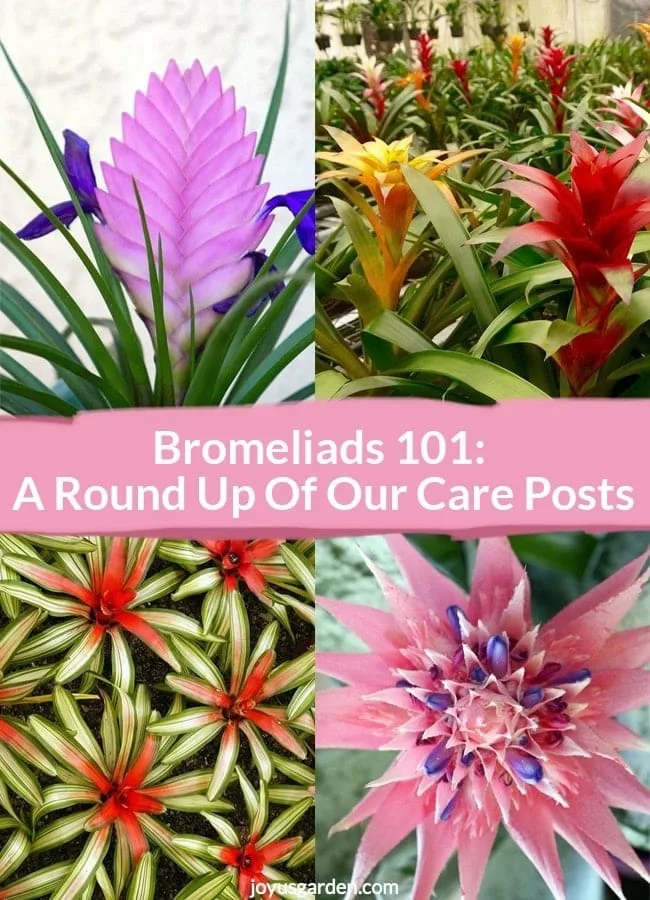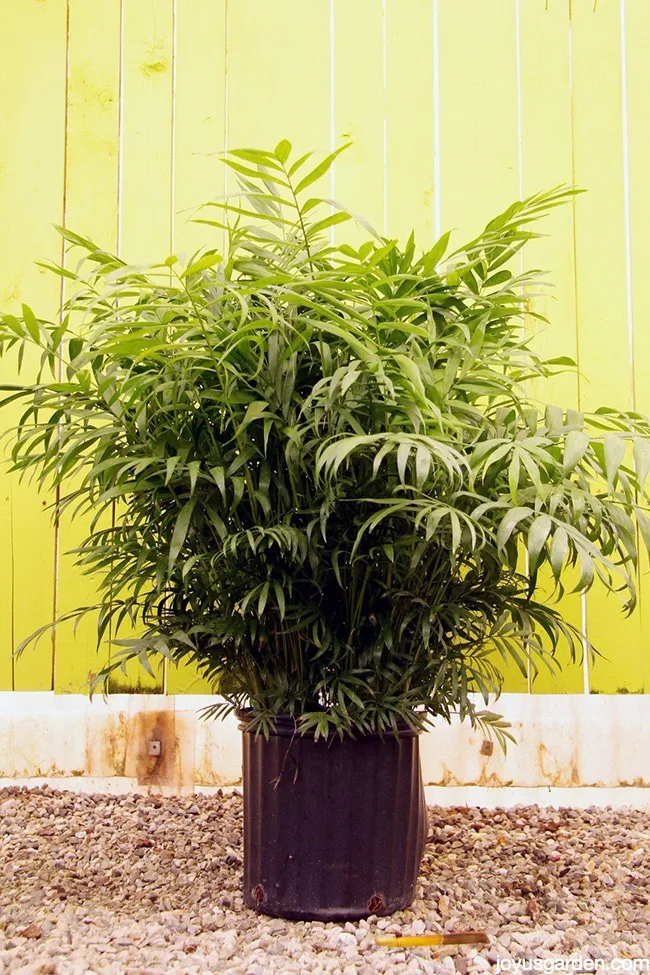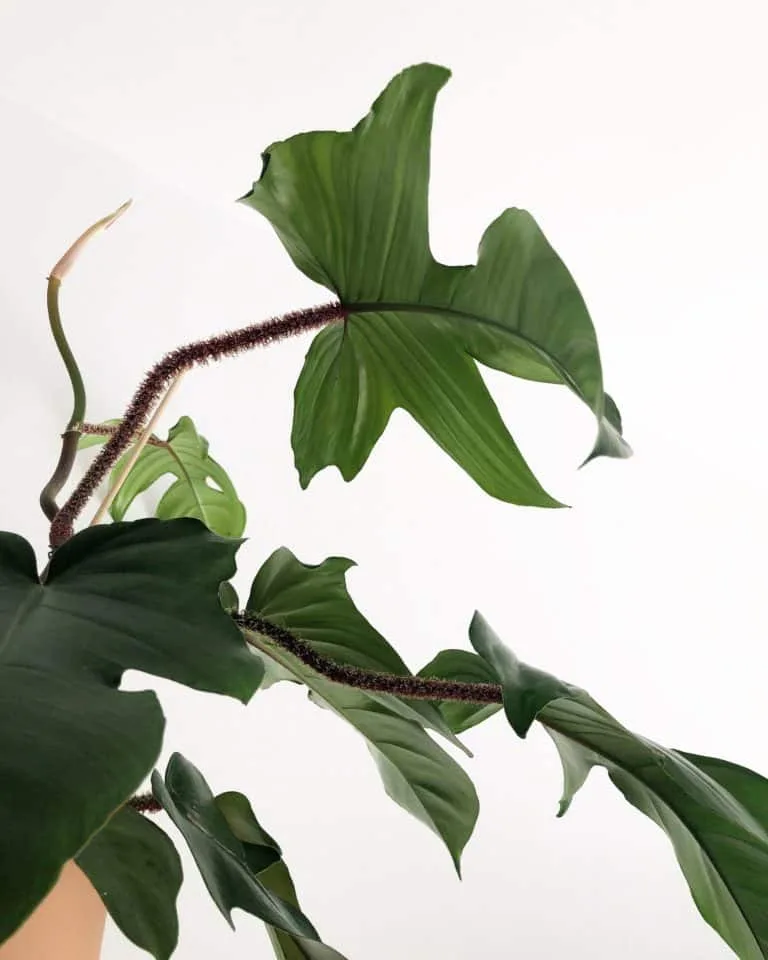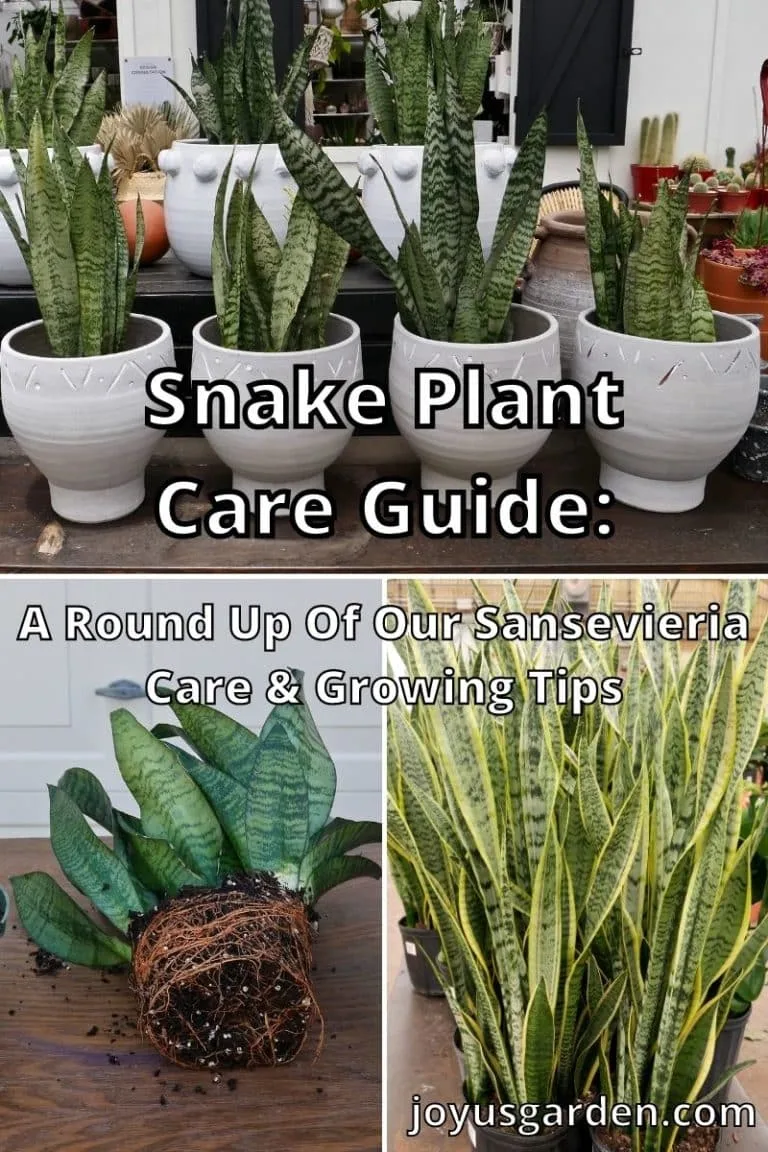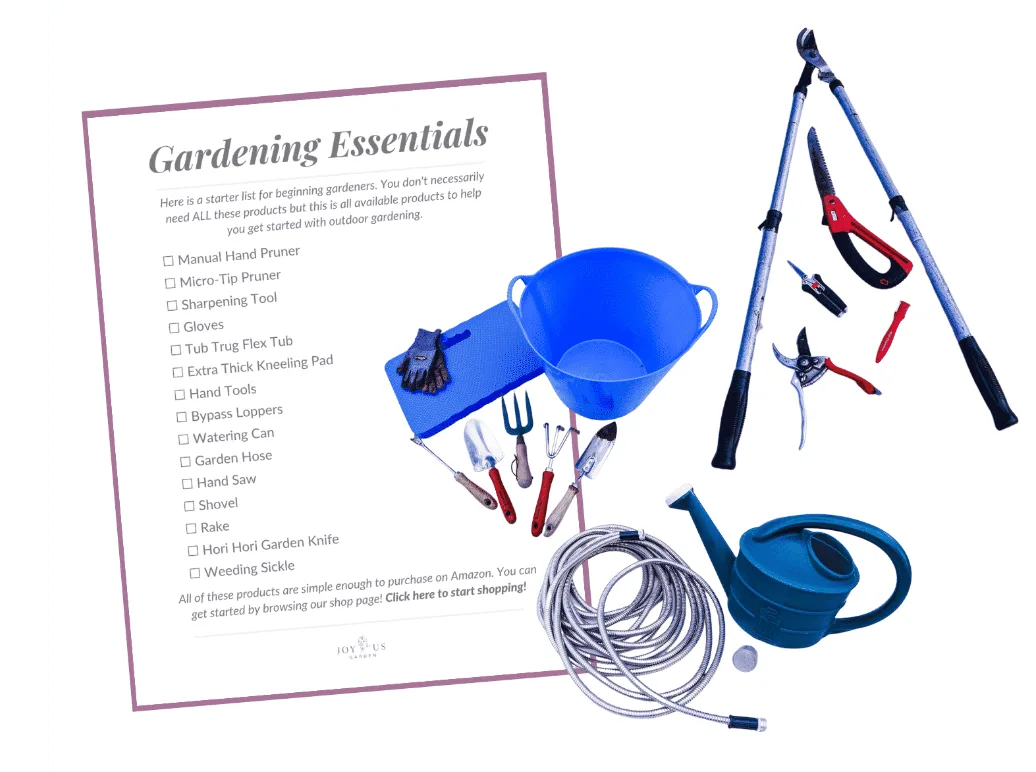African Mask Plant Care: Growing Alocasia Polly
My African Mask Plant sits on a long table in my dining room along with eight or nine other plants. I must say, with its magnificent foliage, it steals the show. It’s a stunning indoor plant. However, many gardeners struggle to grow it. These African Mask Plant care tips will help you out.
It’s tricky to grow indoors and if it’s not happy, it’ll go downhill fast. The three key points of keeping this plant looking good are exposure, watering, and an above-humidity requirement.
I live in the Sonoran Desert in Arizona which is very dry (average humidity of 29%). Despite a few brown tips, mine is doing just fine although it’s certainly not the most robust of my houseplants!
This plant shares the same family (Araceae) as many other popular houseplants: anthuriums, pothos, monsteras, philodendrons, aglaonemas, peace lilies, arrowhead plants, and zz plants. I always find this interesting as plants in the same family share similar characteristics. I guess that’s the plant geek in me.
I bought this plant labeled as African Mask Plant. The genus and species are most likely Alocasia amazonica and the cultivar is “Polly”. This is a smaller growing hybrid plant that was developed for the houseplant trade as most of the other Alocasias get large.
You may also see it called “Kris Plant”. Confusing, I know. Regardless of which one I actually have, the care is the same whether it’s been labeled African Mask Plant or Alocasia Polly.
African Mask Plant Traits
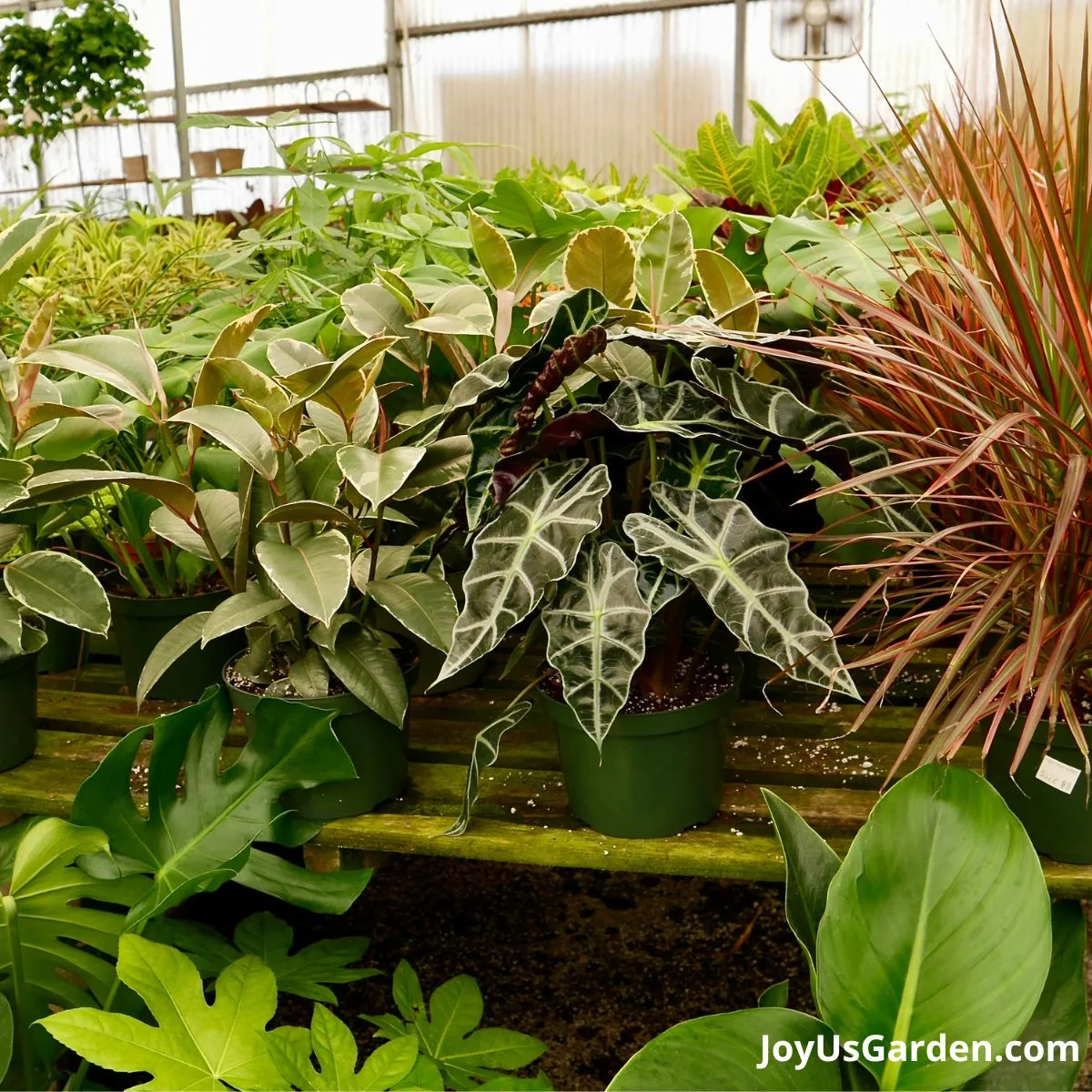
Uses
They’re most commonly sold as tabletop plants in 6″ pots. You can also find them in 4″ and 8″ pots. As they grow, they not only get taller but spread too. The foliage gets large so it may become a low, wide floor plant (unless you have a lot of room on a table!).
Size
Alocasia Polly will max out around 2′ x 2′. Other Alocasias can reach 4-6′. I’ve had my plant for almost 4 years now. The leaves have gotten a bit smaller and overall it isn’t as full. When not semi-dormant (more on that under “Care”) it stands about 20″ tall x 18″ wide.
Growth Rate
Moderate if all conditions are to its liking. This plant not only loves humidity but warm temps too. Mine puts out a big growth spurt in spring and summer.
Alocasia African Mask Flowers
It has a green spathe-like flower. As an indoor plant, it doesn’t happen on a regular basis if at all. The foliage is what makes this plant desirable.
Big Draw
This is easy to see – Alocasia Polly has those standout deep green leaves with pronounced veins!
Are you looking for another houseplant with gorgeous foliage? Check out the Pink Aglaonema Lady Valentine.
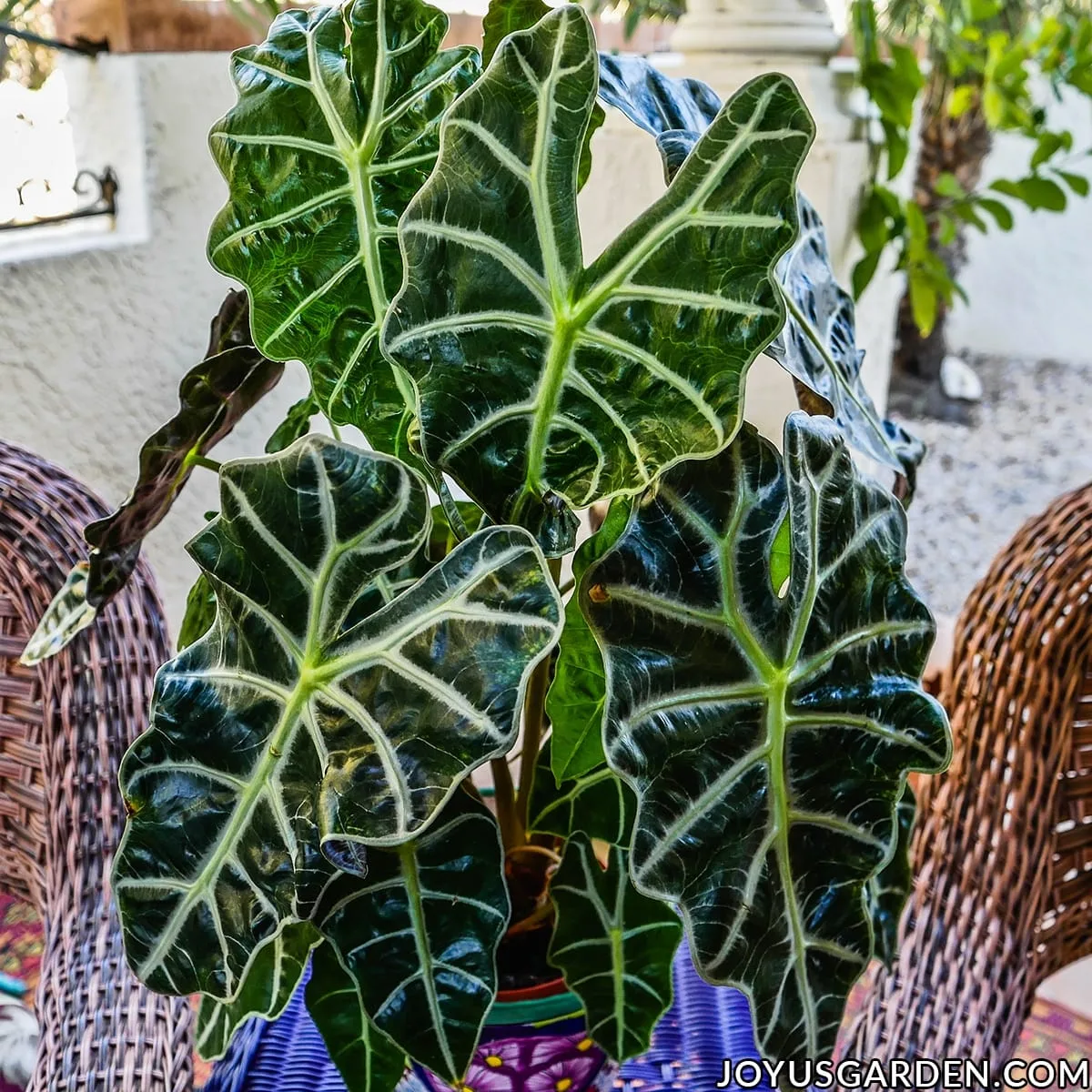
African Mask Plant Care
One thing to note about this plant: It goes through a period of dormancy, usually in the fall or winter months. The foliage completely (or almost completely) dies back and then comes back in spring.
It grows from underground stems called rhizomes that spread and produce roots, like iris. It’s the end of February, and mine is in that semi-dormant phase now.
Alocasia Polly Light Requirements
Like many other houseplants, the African Mask Plant needs bright, indirect light. This would be medium or moderate light.
It doesn’t do well in low light – the leaves will get smaller and the plant won’t grow. On the other hand, keep it out of the direct sun and away from the hot glass of a window with a south or west exposure. This will cause sunburn.
My Alocasia Polly sits 10′ away from an east-facing bay window. You can see this in the video below. I live in Tucson where the sun shines a lot (Arizona is the sunniest state in the US) so this works fine for my houseplants.
You may have to rotate your plant every two months or three months so it gets light on all sides.
In the winter, you may have to move your plants to a brighter location. More on Houseplant Care In Winter.
Alocasia Polly Watering
I never let mine completely dry out. As a general rule, I let the soil mix dry out 3/4 of the way before watering again.
In the warmer months, I water My African Mask Plant every six to seven days and every twelve to fourteen days in the winter months. Adjust the frequency to your environment and how the plant is drying out. Here’s a guide to Watering Indoor Plants in case you’re interested.
I really can’t tell you how often to water yours because there are many variables that come into play. Here are a few: the pot size, the type of soil it’s planted in, the location where it’s growing, and your home’s environment. As much as this plant doesn’t like to dry out, it doesn’t like to stay constantly wet.
When my plant is semi-dormant, I water it every fourteen days or so.
If your African Mask Plant has yellow leaves, it’s most likely due to overwatering or underwatering. You can cut those leaves off.
African Mask Plants aren’t the easiest plants to care for, but here are 15 Easy Care Plants that are great for beginning gardeners.
Humidity
A lack of humidity makes this beauty tricky to grow. Other plants native to the sub-tropics/tropics do fine in our drier home environments. A moderate to a high level of humidity is key to African Mask Plant care.
Sometimes the humidity levels in Tucson are 12%. The average houseplant enjoys a level of around 50%. That’s why my Alocasia Polly isn’t as robust as it was when I bought it. Here’s what I do to increase the humidity factor:
- The grow pot sits on a saucer filled with rock. I keep the saucer 3/4 full of water. Just make sure the roots don’t sit in the water because that’ll bring on root rot.
- I remove the plant from its decorative container and take the plant to my deep kitchen sink. Then, I give it a spray and let it sit there for an hour or so.
- I have a humidity meter in my dining room. I run my Canopy Humidifiers when the humidity reads low, which is a good portion of the time here in the Arizona desert. I run them 4-5 times a week for 6-8 hours depending on the humidity level.
If you’ve got a mister bottle, your plant would appreciate a spray two or three times a week.
How much, if at all, you need to increase the humidity factor depends on how dry your home is and how your plant is doing.
My African Mask Plant has small brown leaf tips. This is in response to the dry air.
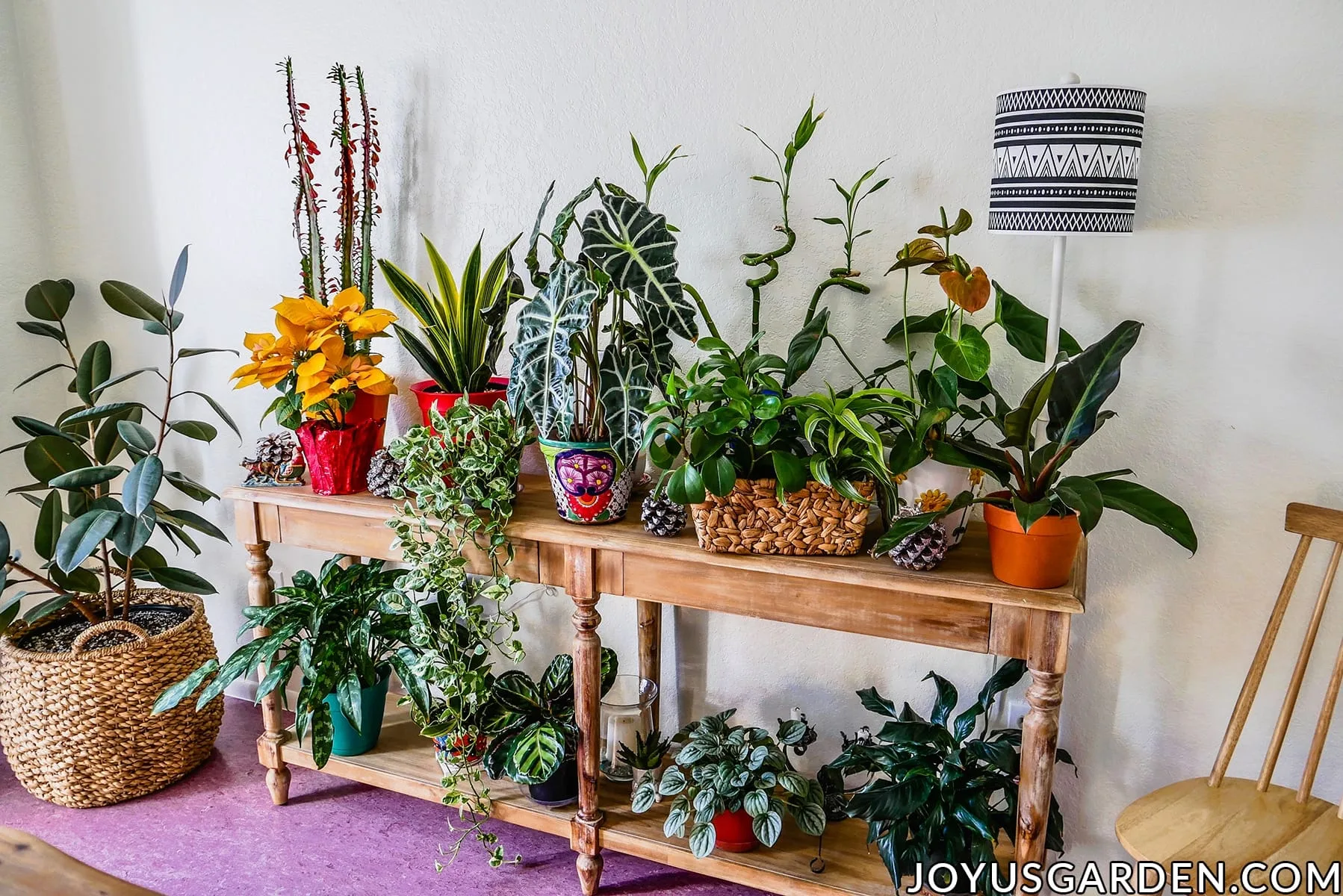
Temperature
This plant loves warm temperatures. It’ll tolerate cooler temps but won’t grow as much and be as happy.
Fertilizer For Alocasia
Besides my worm compost/compost routine every other spring, I feed this plant six to seven times a year during the growing season in spring, summer, and early fall.
I fertilize my plants from mid-February through October. We have a long growing season here in Tucson and my houseplants appreciate it. In a colder climate, you may start feeding in late March or April.
When my plants are putting new growth and new leaves, it’s my sign to start feeding. For you in a different climate zone with a shorter growing season, feeding two or three times per year may do it for your indoor plants.
I feed my container plants indoors and outdoors with Grow Big, liquid kelp, and Maxsea three to seven times during the growing season. By the way, I alternate fertilizers and don’t use them all together.
Other options you might consider are would be kelp/seaweed fertilizer and Joyful Dirt. Both are popular and get great reviews.
Don’t over-fertilize (use too great a quantity and/or do it too often) because salts can build up and lead to root burn. The lower the light, the less often you’ll fertilize.
Show your office some love and add some life with these Office Plants For Your Desk.

Alocasia Soil Mix Recipe
The potting mix needs to be aerated and well-draining. My recipe is a combo of 1/3 coco chips, 1/3 pumice (perlite is fine too if that’s what you have), and 1/3 potting soil. I also throw in a few handfuls of charcoal because I have it on hand. The charcoal isn’t necessary but it sweetens the soil and aids in drainage.
I also add in a handful or two of organic compost when planting because this plant likes a rich mix. I top dress with a 1/4″ layer of worm compost with a 1″ layer of compost over that.
Repotting/Transplanting
This is best done in spring or summer; early fall is fine if you’re in a warm climate. Avoid repotting any of your house plants in the winter if you can because it’s their time to rest. The faster your plant is growing, the sooner it’ll need repotting.
Repotting your African Mask Plant every two to four years will be fine because it prefers to grow a bit tight in its pot. When I repot mine (which will happen in the next month or two), I’ll go up 1 pot size – from a 6″ grow pot to an 8″ grow pot.
It’s best if the pot has drainage holes so the excess water can flow out the bottom of the pot.
Some Of Our General Houseplant Guides For Your Reference: Guide To Watering Indoor Plants, Beginner’s Guide To Repotting Plants, How to Clean Houseplants, Winter Houseplant Care Guide, Plant Humidity: How I Increase Humidity For Houseplants, Buying Houseplants: 14 Tips For Indoor Gardening Newbies
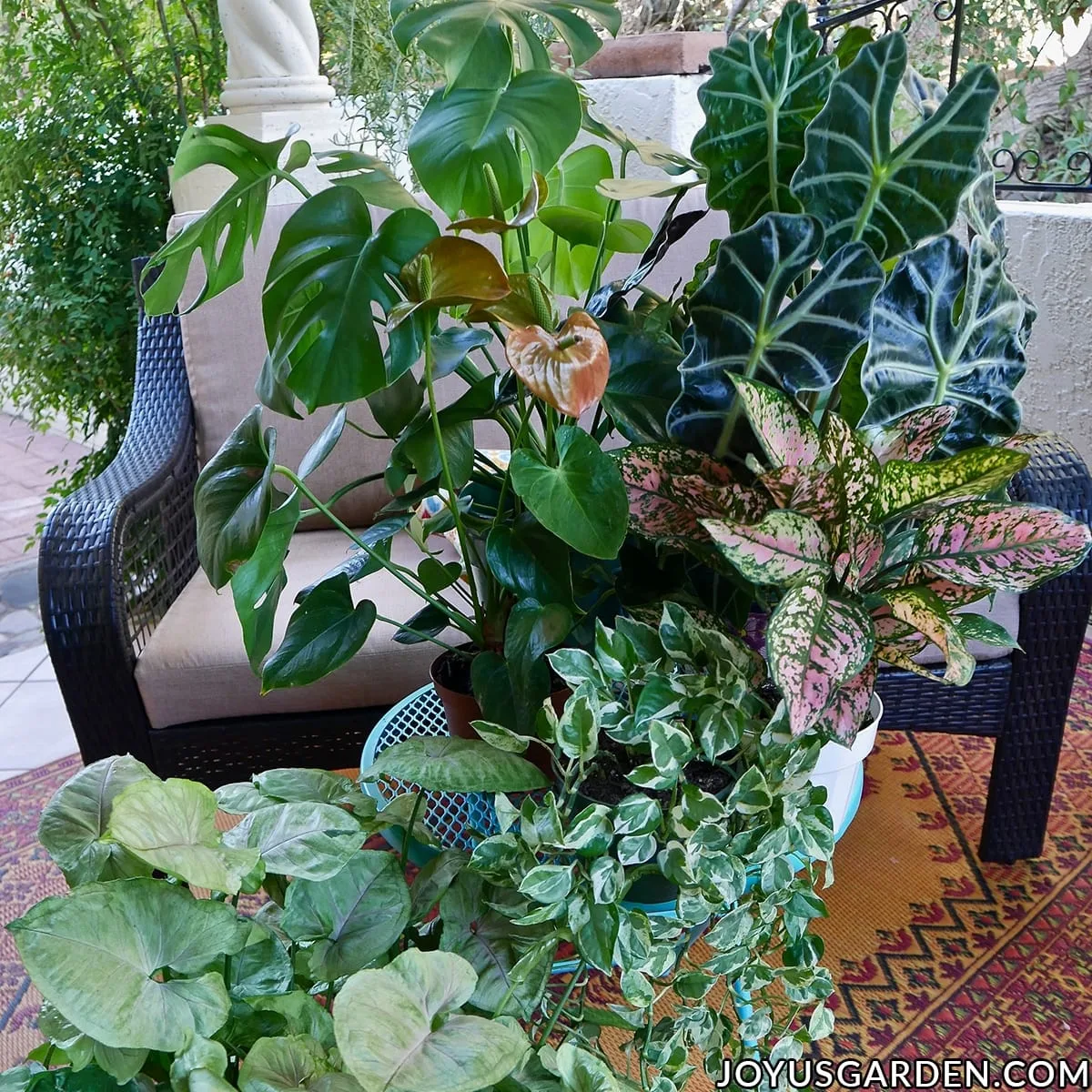
African Mask Plant Propagation
The best way to propagate Alocasia Polly plants is by division. It’s best done in the warmer months: spring, summer, and into early fall (if you’re in a climate with warmer winters like me).
The process is similar to dividing a ZZ Plant. You can see How I Did That Here.
Pruning
Not much is needed. The main reason to prune your African Mask Plant is to take off the occasional yellow leaf.
Just make sure your Pruners Are Clean and Sharp before you do any pruning.
If you’re a beginning gardener and looking for some Easy Care Floor Plants and Easy Tabletop & Hanging Plants, these are some of our faves!
Pests
Mine hasn’t gotten any. I know they can be susceptible to mealybugs, especially deep inside the new growth. These white, cotton-like pests like to hang out in the nodes and under the leaves. I simply blast them off (lightly!) in the kitchen sink with the spray and that usually does the trick. If not, I use the cotton swab dipped in alcohol and water method.
Also, keep your eye out for scale insects, spider mites, and aphids. It’s best to take action as soon as you see any pest because they multiply like crazy.
Pests can travel from houseplant to houseplant in no time fast so make you get them under control pronto.
Pet Safety
Alocasia Polly, like all plants in the Araceae family, is considered to be toxic. I consult the ASPCA website for my info on this subject and see in what way the plant is toxic. Here’s more info on this for you.
Looking for non-toxic houseplants? Here’s a list of 11 Pet-Friendly Houseplants for your reference.
African Mask Plant Care Video Guide
African Mask Plant Care FAQs
The Alocasia Polly will max out around 2 feet; as a hybrid, it was bred to be a smaller size. Other Alocasias can reach 4-6 feet.
It goes through a period of dormancy or semi-dormancy, usually in late fall or winter. This can leave you confused and thinking your plant is dying. The foliage completely (or almost completely) dies back and then comes back sometime in spring.
Other reasons could be a watering or light exposure issue or lack of humidity.
This plant is known to be difficult to grow indoors, especially for the long haul. If you’re a beginning houseplant gardener, this isn’t a good one to start with!
As a general rule, I let the soil mix dry out 3/4 of the way before watering again. I never let it completely dry out. An African Mask Plant likes moist soil, not soggy soil. I water it less often when it’s in the dormancy phase.
Drooping can happen because of a watering issue; either too much or too little. You can also confuse drooping with the plant going into its dormancy phase.
The leaves can get brown tips, this is in response to the dry air. If the spots are larger, this could be due to a light exposure that’s too low or too much water.
When plants are getting overwatered they might sweat out the excess water by dripping water from their leaves.
The three key factors for keeping this plant looking good and growing are exposure, watering, and an above-humidity requirement.
Yes, they are toxic to cats.
Summary: African Mask Plant care (or Alocasia Polly care) can be tricky, but it’s well worth a try. The main things you need to do are: up the humidity factor, make sure it’s receiving bright, natural light, and don’t let it go completely dry or keep it sopping wet.
This plant is enjoying a surge in popularity right now. It’s not as hard to find as it used to be. A 4″ plant isn’t too expensive. The foliage on this plant is truly a standout!
Happy gardening,


